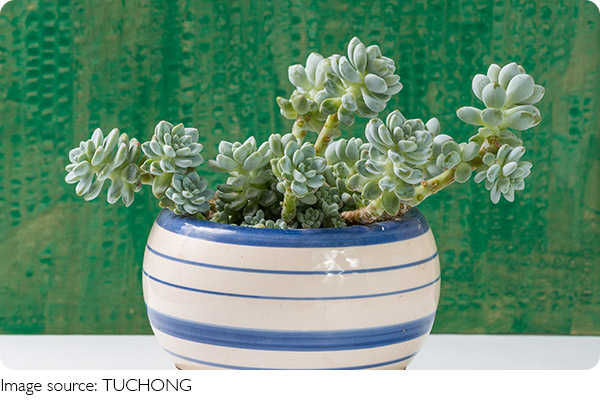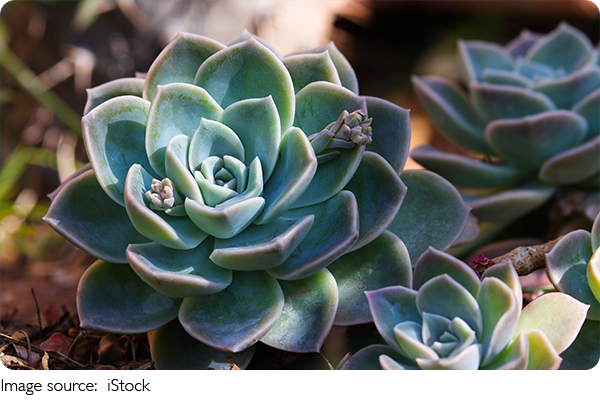Sun and Succulents

We all love succulents—these hardy, low-maintenance plants are perfect for indoor gardens and have gained popularity for their vibrant colors and unique textures.
But have you ever wondered why some succulents turn red under certain conditions? Is it really true that more sunlight makes them redder? Let's dig into this question and explore the science behind the color changes in succulents.
Why Do Succulents Change Color?
Succulents, like many plants, change color due to various factors, with sunlight being one of the most influential. In fact, many succulents can shift from green to hues of red, purple, or even blue when exposed to specific environmental conditions. This color change is primarily a response to stress, which is often triggered by exposure to intense sunlight or temperature fluctuations.
In nature, succulents that experience more sunlight typically develop red or purple tones as a form of protection. The plant's pigments, such as anthocyanins, are produced as a defense mechanism against UV radiation. These pigments absorb excess light and protect the plant from potential damage.
The Role of Sunlight in Color Change
So, does more sunlight really make succulents redder? The answer is yes—up to a point. When succulents are exposed to more sunlight, they tend to produce more anthocyanins, the pigments responsible for the red and purple colors. This response is similar to how our skin tans when exposed to the sun, though it's for the plant's protection rather than adaptation.
However, there is a catch. Too much direct sunlight, especially in very hot conditions, can cause the plant to burn or become stressed, leading to damage rather than a beautiful red hue. Finding the right balance is key to achieving those vibrant red colors without harming the plant.
Other Factors That Affect Succulent Color
While sunlight plays a big role, there are other factors that can affect the color of succulents. Here are a few of the main ones:
1. Temperature: Temperature fluctuations can also cause succulents to turn red. A drop in temperature at night, while still sunny during the day, encourages the production of anthocyanins, leading to a color change.
2. Watering Practices: Overwatering can cause stress to succulents, and in turn, may trigger a color change. On the other hand, underwatering can lead to shriveled plants, which also can cause the plant to change its hue as it tries to survive in drought-like conditions.
3. Soil and Fertilization: The quality of the soil and the use of fertilizers can also impact the color of your succulents. Nutrient deficiencies or imbalances may affect the plant's ability to produce anthocyanins, altering its color.
Which Succulents Are Most Likely to Turn Red?
Not all succulents will turn red under the same conditions. Some varieties are more predisposed to show off vibrant hues when stressed by sunlight, temperature, or watering practices. Some common examples include:
• Echeveria: Many Echeveria species, like the Echeveria 'Afterglow,' will turn a beautiful reddish-pink color when exposed to more sunlight.
• Sedum: Certain Sedum varieties, like Sedum ‘Cherry Tart,' will develop stunning red tones when they receive enough sunlight and undergo stress.
• Kalanchoe: Kalanchoe plants are well-known for their vibrant colors and will often shift from green to a reddish shade under intense light or temperature stress.
How to Encourage Red Succulents Without Hurting Them
If we want to encourage our succulents to take on those stunning red hues, there are a few things we should keep in mind:
1. Gradual Exposure: Start by gradually increasing the amount of sunlight your succulents get, allowing them to adapt to the increased exposure without getting scorched.
2. Avoid Overwatering: Succulents prefer dry conditions, so make sure the soil has dried out completely before watering again. Overwatering can stress the plant in a way that harms its health.
3. Choose the Right Varieties: Some succulents are more likely to turn red than others. If the goal is to have a colorful plant, opt for species that naturally develop red or purple tones.
4. Temperature Control: Ensure that your succulent is getting both daytime sun and cooler nighttime temperatures. This temperature variation can trigger the color change in many types of succulents.

Conclusion: Sunlight Is Key, But Moderation Is Crucial
In conclusion, yes, sunlight can make succulents turn red, but it's all about moderation. Too much direct sunlight or excessive temperature fluctuations can stress the plant and cause damage, while a controlled amount of sunlight can encourage the beautiful red hues we love. So, to achieve the perfect red succulent, we should focus on finding that sweet spot of sunlight, water, and care.
If you've ever wondered why your succulent isn't turning red, or if you're looking to encourage more vibrant colors, now you have the knowledge to help it thrive. Have you ever experienced a succulent turning red in your care? Share your stories with us in the comments below! We'd love to hear about your own plant journeys.
-
 Hemoglobin ElectrophoresisWhy Is Hemoglobin Electrophoresis Vital? Unlock The Secrets Behind Blood Disorders Now!
Hemoglobin ElectrophoresisWhy Is Hemoglobin Electrophoresis Vital? Unlock The Secrets Behind Blood Disorders Now! -
 Guardians Above UsThis Space Satellite Spots Tornadoes Before They Form—Here’s How It Saves Lives from Thousands of Miles Above Earth!
Guardians Above UsThis Space Satellite Spots Tornadoes Before They Form—Here’s How It Saves Lives from Thousands of Miles Above Earth! -
 Autoimmune Eye DiseasesIs Your Immune System Attacking Your Eyes?! Shocking Clues Doctors Now Recognize!
Autoimmune Eye DiseasesIs Your Immune System Attacking Your Eyes?! Shocking Clues Doctors Now Recognize!